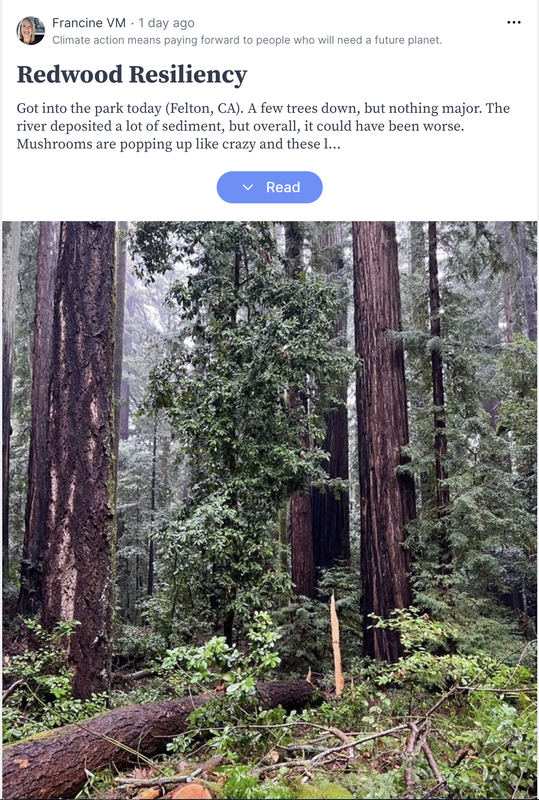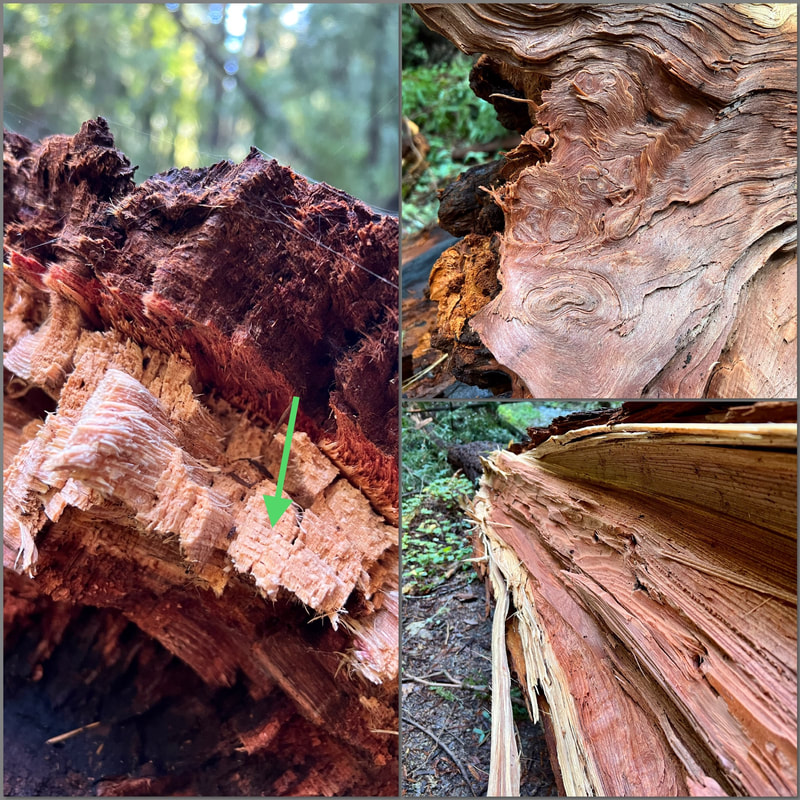|
Well, I broke up with Twitter, lost interest in Pinterest, and Instagram is insufferable. I'm still getting hammered with clothing ads. Instead of dress for success, I now dress for stress-free living...give me more nature!
In November I joined a new social media platform called Post (think micro-blogging) that was launched by the former founder of Waze. It's kinda like leaving the social media freeway and being redirected through neighborhoods, except you get to know the neighbors! Post.News is going to open to everyone soon and hopefully their values of "Real People, Real News, and Civil Conversations" will continue. OK, I may be overly optimistic. But it's worth hanging around to see if civility wins. On Post @Francine_VM A short hike turned into a science experience today. This is the inside of a downed coast redwood where part of the clonal group split off and tore apart on its way down into the creek. You can see a different view of the sheaths (aka rings) that transport water up from the roots. There’s a tiny spider interested as well. Also, check out the swirl patterns. Because the heartwood is extremely decay resistant, and resistant to disease, this fallen tree will keep its carbon out of the atmosphere for a long time. Read about non-timber values of tall redwoods.
The past 12 weeks in the UC Climate Steward Program has been so inspiring. Feeling much more comfortable discussing shared values related to climate change. Below is a preview of an educational activity I developed for my capstone project. Of course the topic is redwoods and climate change, right?!? |
Archives
October 2023
Categories |


 RSS Feed
RSS Feed